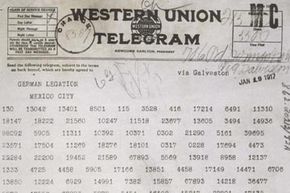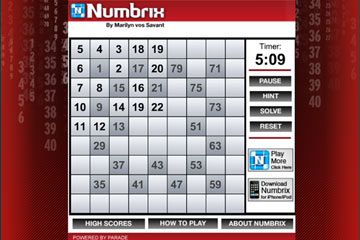Have you ever sent a secret message -- perhaps to outsmart an opponent or simply to keep a surprise party under wraps? We all need to send the occasional clandestine communiqué, and a great way to do it is through cryptograms, a type of puzzle that uses letter or number substitutions to hide the meaning of a word or phrase. As long as only the author and intended recipients of the message are privy to the substitution code, its hidden meaning remains a mystery.
Throughout history, cryptograms have been used to protect some of the world's most tightly held secrets. One of the most famous cryptograms is the Zimmerman Telegram, which was sent during World War I by the German foreign minister, Arthur Zimmerman, to the German ambassador to Mexico, Heinrich von Eckhart [source: National Archives]. In it, Zimmerman uses a numeric code to offer Mexico significant portions of U.S. territory in exchange for Mexico's cooperation with Germany against the U.S. The Zimmerman telegram was quickly decoded by the British, and the U.S. entered the war on the side of the Allies just a few weeks later.
Advertisement
There are many different ways to code a message using a cryptogram. One rather simple example is called a substitution cipher, where the letter "A" is substituted for the letter "Z," the letter "B" is substituted for the letter 'Y," and so on through the alphabet [source: Puzzle Baron's Cryptograms]. Another is the Caesar cipher, in which each letter of the alphabet is shifted by a certain number of spaces. For example, using the Caesar cipher with a shift of one space, the word 'DOG' becomes "EPH"' [source: Trinity College].
Traditionally, cryptograms have been used by politicians, spies, lovers, and perhaps some clever teenagers who want to hide their covert conversations from parents' prying eyes. These days they are becoming increasingly common as brainteasers, with an array of Web sites and mobile applications devoted to the solving of cryptograms and cryptoquotes, which are simply cryptograms based on famous quotes [source: Donahue]. In the next section, we explore some of the basic strategies for solving cryptograms.
Advertisement



